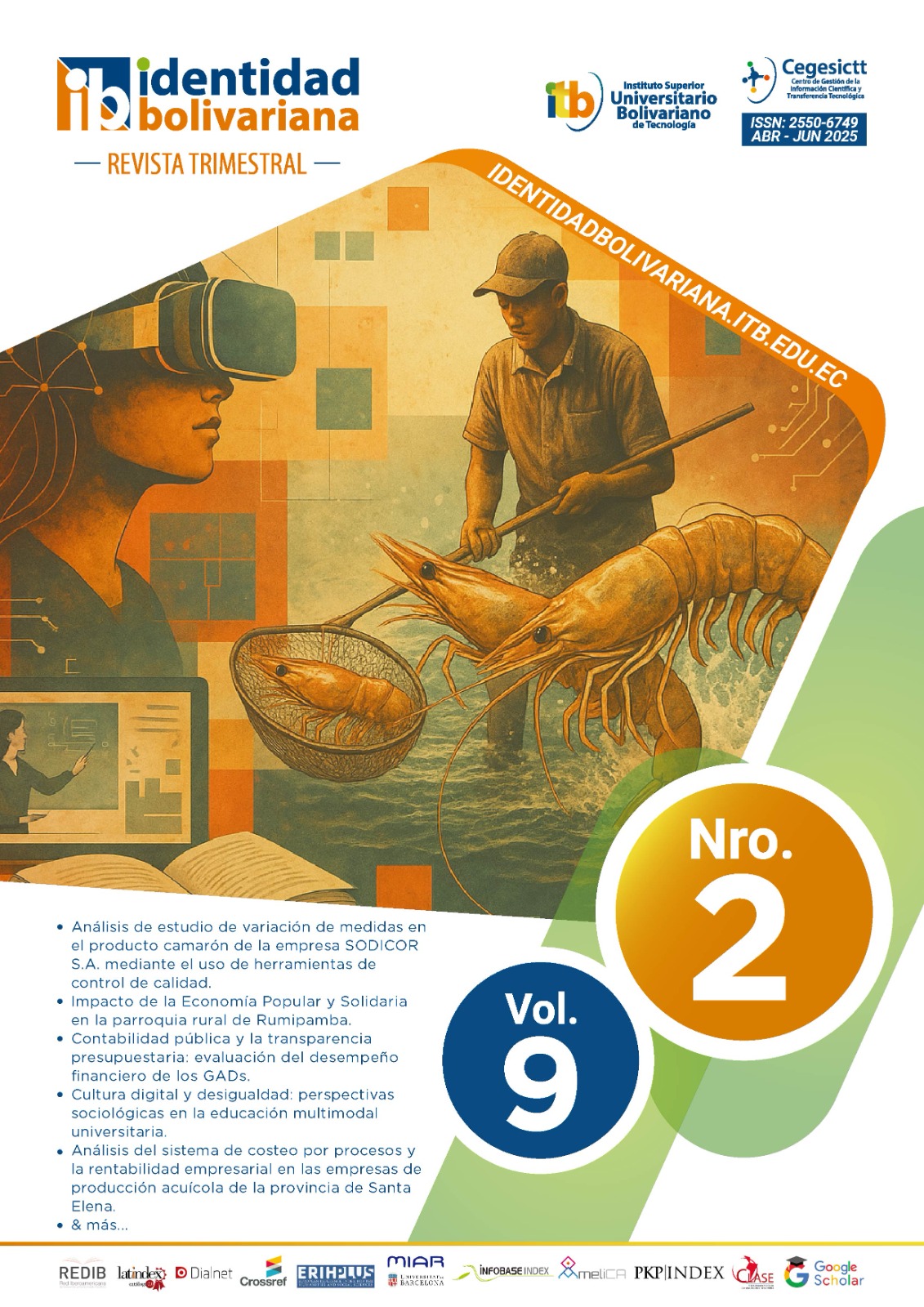Analysis of a Study on Measurement Variation in ShrimpProducts at SODICOR S.A. Using Quality Control Tools
Main Article Content
Abstract
This project falls within the research line of global competitiveness and is one of the outcomes of the practical manual project for implementing service and process improvement methodologies, quality models, and tools. The purpose of this research was to identify the un-
derlying causes of variations in the measurements and characteristics of shrimp through a detailed and systematic analysis of the product from the company Sodicor S.A., using Quality Control tools. The goal
was to identify and reduce sources of variation to improve product
consistency and quality.
The methodology aimed to implement improvements in quality control processes by using metrological tools, thereby ensuring more consistent production aligned with quality standards.
This case study follows a descriptive quantitative research approach,
collecting data through a recording sheet that documented the most
common measurements of the shrimp, such as weight and size. A
sample of 90 shrimp blocks was selected, and the applied techniques
are detailed further in the study. Finally, using the collected data, an
Ishikawa Analysis was conducted to determine the causes and effects
of the most significant variations. This allowed the development of a
proposal that includes corrective actions in areas such as preservation,
handling, supply, procedure manuals, quality control, and planning.
Article Details
Section
How to Cite
References
Asamblea Nacional del Ecuador. (2020). Ley Orgánica para el Desarrollo de la Acuicultura y Pesca. Asamblea Nacional del Ecuador.
Bernal, C. A. (2010). Metodología de la investigación (3.a ed.). Pearson.
Cabezón Gutiérrez, S. (2014). Control de calidad en la producción industrial [Tesis de grado, Universidad de Valladolid, Escuela de Ingenierías Industriales].
Camisón, C., Cruz, S., & González, T. (2006). Gestión de la calidad: Conceptos, enfoques, modelos y sistemas. Pearson Educación.
Castillo, J., Badii, M., Landeros, L., & Cortez, K. (2017). Papel de la estadística en la investigación científica. Innovaciones de Negocios, 14(27), 108–145.
Constitución de la República del Ecuador. (s.f.). Instituto Público de Investigación de Acuicultura y Pesca. Constitución de la República del Ecuador. https://www.ambiente.gob.ec/wp-content/uploads/downloads/2013/08/Constitucion_Ecuador.pdf
De Ronald, H. L., Norbert, L. E., & Mottley Jr, H. (1989). Control de calidad y beneficio empresarial. Ediciones Díaz de Santos.
Fallas, J. (2012). Tendencia central, variabilidad y forma de la distribución. Universidad para la Cooperación Internacional, 28, 1–30.
Gutiérrez, P. (2020, mayo 26). ¿Sabes cuáles son las tallas de los camarones? Food and Wine. https://foodandwineespanol.com/secciones/gastronomia/sabes-cuales-son-las-tallas-de-los-camarones/
Inducom Ecuador. (2023, agosto 30). Importancia de la industria camaronera en Ecuador. https://inducom-ec.com/importancia-de-la-industria-camaronera-en-ecuador/
ISO - International Organization for Standardization. (2018). Sistemas de gestión de la inocuidad de los ali-
mentos. Secretaría Central de ISO.
López Lemos, P. (2016). Herramientas para la mejora de la calidad. Fundación Confemetal.
Piñeiro, M. (2000). Metrología. Universidad de Oviedo.
Secretaría Central de ISO. (2003). Sistema de gestión de las mediciones. Secretaría Central de ISO.

